Nominated innovations
1000 innovative clean energy solutions and > 150 framework enablers with the potential to deliver more than twelve gigatonnes of avoided emissions by 2030
These assessments are based on a basic avoided emission assessment. The overall concept of avoided emissions is that a solution (product or service) enables the same function to be performed with significantly less GHG emissions. The method of measuring avoided emissions, is to compare a baseline scenario without the enabling solution, with a scenario using the enabling solution; whereby the baseline represents the ‘business as usual’ (BAU) scenario.
These assessments are based on the framework document: The Avoided Emissions Framework (AEF) from September 2020
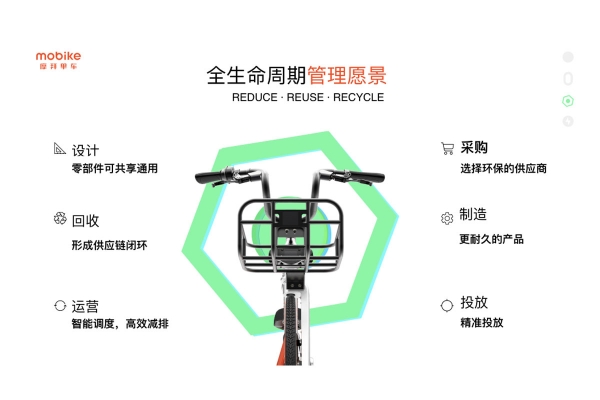
Stationless bike sharing system
Mobike Technology claims to have created the world's first intelligent shared bicycle model. The patented smart model integrates GPS and communication modules to use a new generation of internet of things (IoT) technology. Through the smartphone app, users can locate and use the nearest bicycle anytime, anywhere. The bikes are fully dockless in this instance. The sharing model encourages more transport options through means of bicycling instead of fossil-fueled transit.
China

Mobike Technology Co., Ltd
Stationless bike sharing system
Mobike Technology claims to have created the world's first intelligent shared bicycle model. The patented smart model integrates GPS and communication modules to use a new generation of internet of things (IoT) technology. Through the smartphone app, users can locate and use the nearest bicycle anytime, anywhere. The bikes are fully dockless in this instance. The sharing model encourages more transport options through means of bicycling instead of fossil-fueled transit.
Currently unavailable
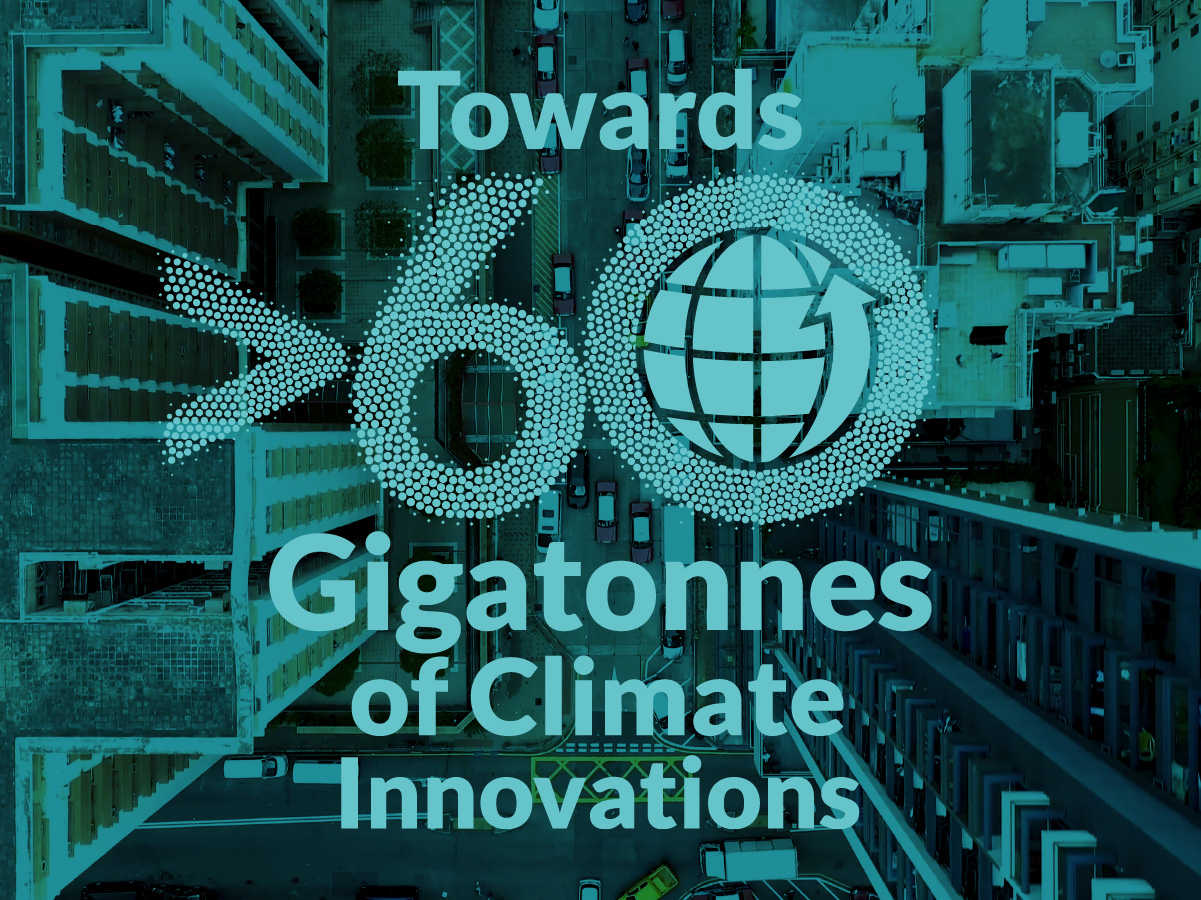
Foo-shion
Foo-shion wrote: Foo-shion is a smart phone app which help users form a healthy eating and living style, which including public kitchen, ai technic check food information, recycling food garbages guide. The take-out food in china is very popular since the high speed life style. However, the take out food may bring the unhealthy problem and environmental pollution. And to encourage people to cook more and eat local food, and deal with the issues of take out food, we made this app. Our app can lead people a healthier eating hobbit in order to let eating to be more sustainable... Source: EIT Climate KIC's Climathon
China

Foo-shion
Foo-shion
Foo-shion wrote: Foo-shion is a smart phone app which help users form a healthy eating and living style, which including public kitchen, ai technic check food information, recycling food garbages guide. The take-out food in china is very popular since the high speed life style. However, the take out food may bring the unhealthy problem and environmental pollution. And to encourage people to cook more and eat local food, and deal with the issues of take out food, we made this app. Our app can lead people a healthier eating hobbit in order to let eating to be more sustainable... Source: EIT Climate KIC's Climathon
Currently unavailable

Ancillary services for PV power plants
Conventional power plants are often used to provide ancillary services such as frequency regulation in electricity grids. It had traditionally been thought that large scale solar PV would not be able to perfom stability services in the grid. First Solar have demonstrated that conventional power plants such as coal power plants can be replaced by PV power plants in the provision of frequency regulation. This replacement helps in the reduction of CO₂ emissions by lowering dependence on traditional fossil-fueld power sources.
Chile
≈10

First Solar
Ancillary services for PV power plants
Conventional power plants are often used to provide ancillary services such as frequency regulation in electricity grids. It had traditionally been thought that large scale solar PV would not be able to perfom stability services in the grid. First Solar have demonstrated that conventional power plants such as coal power plants can be replaced by PV power plants in the provision of frequency regulation. This replacement helps in the reduction of CO₂ emissions by lowering dependence on traditional fossil-fueld power sources.
≈10Mt CO2e/year
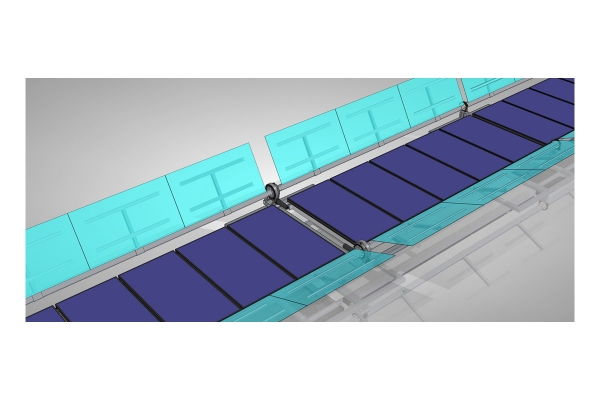
Optimization of solar collectors
Aiguasol have designed a solar concentration called 'Ulisses'. Ulisses is a cylindrical concentrator which uses flat movable mirrors rotating on a shaft. Ulisses can be coupled to flat solar collectors or to photovoltaic modules, thereby enhancing their efficiencies and minimizing the cost of power generation. The fact that the mirrors are movable allows the structures and protective systems from wind, snow, and high temperatures to be simplified.
Chile
≈1

Aiguasol
Optimization of solar collectors
Aiguasol have designed a solar concentration called 'Ulisses'. Ulisses is a cylindrical concentrator which uses flat movable mirrors rotating on a shaft. Ulisses can be coupled to flat solar collectors or to photovoltaic modules, thereby enhancing their efficiencies and minimizing the cost of power generation. The fact that the mirrors are movable allows the structures and protective systems from wind, snow, and high temperatures to be simplified.
≈1Mt CO2e/year
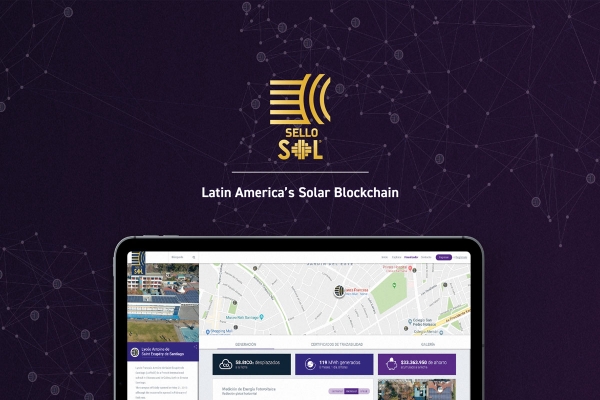
Blockchain for tracking solar energy generation
Sello Sol a certification developed by Phineal allows tracing the solar energy generation on its place of origin through the use of blockchain technology. The data is measured and processed to add value by using it in products, services and transactions as verifiable, transparent and secure information. Phineal states that the blockchain methodology has been tested by companies and public institutions and it is being developed in Latin America for the world
Chile

Phineal
Blockchain for tracking solar energy generation
Sello Sol a certification developed by Phineal allows tracing the solar energy generation on its place of origin through the use of blockchain technology. The data is measured and processed to add value by using it in products, services and transactions as verifiable, transparent and secure information. Phineal states that the blockchain methodology has been tested by companies and public institutions and it is being developed in Latin America for the world
Currently unavailable
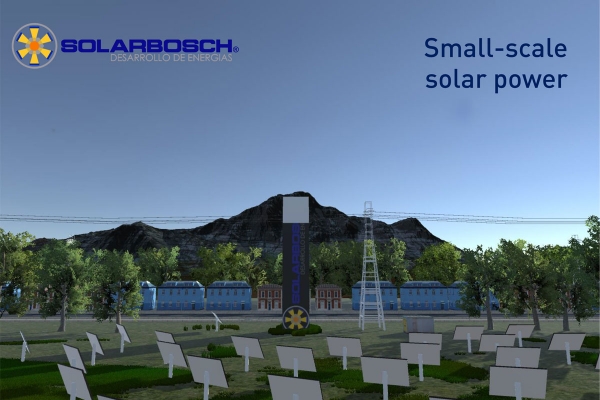
Design of small-scale concentrated solar power plants
In a project called 'Solarbosch', Enerbosh is developing small-scale concentrated solar power tower (CSP-T) plants, with ranges from 0.5 to 3 MWe for power generation or 1 to 10 MWh for heat processes on a 24/7 basis. Current CSP-T plants use molten salts as heat transfer fluid (HTF) and storage medium, reaching temperatures up to 560 °C. This is only profitable at very large scales due to the high investment required. In this project the CSP-T plant uses air as HTF, which can easily exceed 1000 °C. The heat storage medium is copper slag, a Chilean mining industry by-product (low cost), with ideal heat storage properties up to 1,000 °C.
Chile
≈10

Enerbosch
Design of small-scale concentrated solar power plants
In a project called 'Solarbosch', Enerbosh is developing small-scale concentrated solar power tower (CSP-T) plants, with ranges from 0.5 to 3 MWe for power generation or 1 to 10 MWh for heat processes on a 24/7 basis. Current CSP-T plants use molten salts as heat transfer fluid (HTF) and storage medium, reaching temperatures up to 560 °C. This is only profitable at very large scales due to the high investment required. In this project the CSP-T plant uses air as HTF, which can easily exceed 1000 °C. The heat storage medium is copper slag, a Chilean mining industry by-product (low cost), with ideal heat storage properties up to 1,000 °C.
≈10Mt CO2e/year
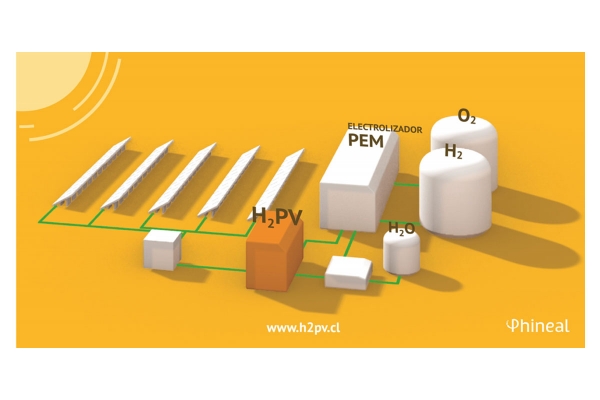
Business model for hydrogen generation and supply
H2PV is a business program of Phineal, which seeks to develop a business model for generation and supply of hydrogen obtained from photovoltaic energy. The energy production disconnected from the electrical network can be utilized for energy storage, fuel cells and transport systems with internal combustion engines dual and other applications combined with other hydrocarbons. Introduction of hydrogen can enhance their energy properties and emission reduction.
Chile

Phineal
Business model for hydrogen generation and supply
H2PV is a business program of Phineal, which seeks to develop a business model for generation and supply of hydrogen obtained from photovoltaic energy. The energy production disconnected from the electrical network can be utilized for energy storage, fuel cells and transport systems with internal combustion engines dual and other applications combined with other hydrocarbons. Introduction of hydrogen can enhance their energy properties and emission reduction.
Currently unavailable
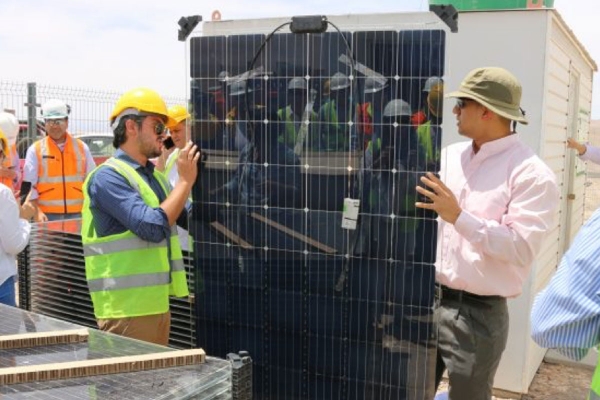
Solar energy harvesting in Chile's desert
The Atacama Desert, located in northern part of Chile, has special conditions that need the development of technologies to allow an efficient solar energy generation. The area presents an average direct global radiation level of 3.500 kWh/m² per annum and an horizontal global radiation level of 2.500 kWh/m² per annum, one of the highest in the world. The solution is a new optimal solar technology to be used in the Atacama Desert. The development includes new materials to resist high radiation levels, a bifacial photovoltaic panel to take advantage of the radiation and the ground and new methods for operation and maintenance considering the lack of water in the desert.
Chile

AtaMos-TeC
Solar energy harvesting in Chile's desert
The Atacama Desert, located in northern part of Chile, has special conditions that need the development of technologies to allow an efficient solar energy generation. The area presents an average direct global radiation level of 3.500 kWh/m² per annum and an horizontal global radiation level of 2.500 kWh/m² per annum, one of the highest in the world. The solution is a new optimal solar technology to be used in the Atacama Desert. The development includes new materials to resist high radiation levels, a bifacial photovoltaic panel to take advantage of the radiation and the ground and new methods for operation and maintenance considering the lack of water in the desert.
Currently unavailable

Energy generation forcasting
Suncast has developed a range of services for predicting and managing solar-based electricity generation. According to their website, the solution offer accurate models of energy generation by utilizing machine learning and artificial intelligence in combination with local weather data. This service is complemented by a monthly, e-mailed-based report that is sent to each customer, linking anomalies in the power generation to impactful parameters such as weather conditions over the relevant time period. Furthermore, the solutions includes an optimization model that indicates when it is the most profitable for each customer to clean their solar panels.
Chile
≈1

Suncast
Energy generation forcasting
Suncast has developed a range of services for predicting and managing solar-based electricity generation. According to their website, the solution offer accurate models of energy generation by utilizing machine learning and artificial intelligence in combination with local weather data. This service is complemented by a monthly, e-mailed-based report that is sent to each customer, linking anomalies in the power generation to impactful parameters such as weather conditions over the relevant time period. Furthermore, the solutions includes an optimization model that indicates when it is the most profitable for each customer to clean their solar panels.
≈1Mt CO2e/year

Sustainable products from rise hull-based nano materials
Consulting and Energy develops and produces sustainable products based on nanomaterials obtained from the recovery of rice husk waste that would otherwise end up on landfills. The husk is initially used as fuel for energy production in a biomass plant that has an ash yield of 20%, which is the basis for several businesses lines that have been developed by the company: production of solar grade silicon, lithium battery material, aerogels for water irrigation, an enzymatic catalyst and structural insulated panel with an insulation sheet of aggregated rice husk.
Chile
≈10

Consulting and Energy
Sustainable products from rise hull-based nano materials
Consulting and Energy develops and produces sustainable products based on nanomaterials obtained from the recovery of rice husk waste that would otherwise end up on landfills. The husk is initially used as fuel for energy production in a biomass plant that has an ash yield of 20%, which is the basis for several businesses lines that have been developed by the company: production of solar grade silicon, lithium battery material, aerogels for water irrigation, an enzymatic catalyst and structural insulated panel with an insulation sheet of aggregated rice husk.
≈10Mt CO2e/year